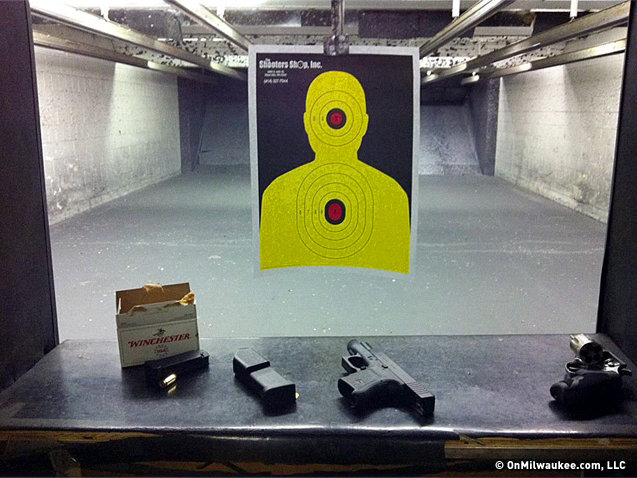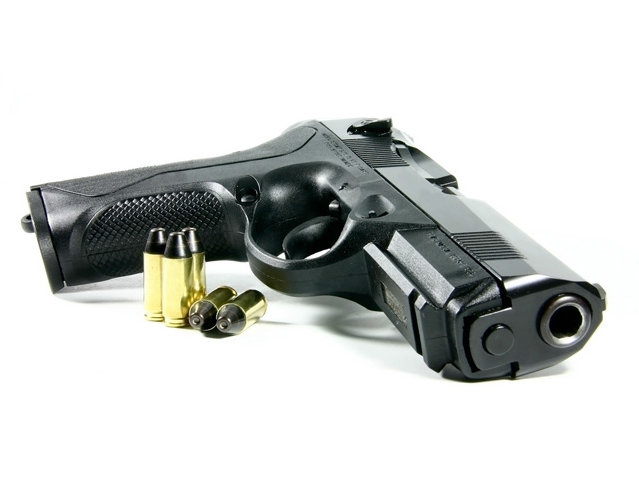If there is a more controversial and emotional issue than guns in this country, we’re not aware of it.
November 1 marks the second anniversary of the passing of the once high profile – and still highly contentious – Wisconsin concealed carry law, with more than 200,000 permits issued in that time. Just as noteworthy are the 5,800 permit applications that were denied for various reasons. The permit fee has also dropped to $40, down from $50 when Wisconsin became the 49th state to allow concealed carry two years ago.
Having taken the mandatory safety class and having received our permit cards from Wisconsin Attorney General J. B. Van Hollen earlier this year, the anniversary seems like a good time to offer personal perspectives on the class, permit and gun ownership in general.
The concealed carry class took place at the Best Western Hotel on Howell Avenue across from Mitchell Airport. There were about 60 people in the class and one of our initial observations was the demographic diversity of the group.
The male-female ratio was about 50-50, with several couples taking the class together, and a good percentage of minorities and younger adults.
We took the concealed carry class from different perspectives. One being that of a 30-something woman with significant shooting experience, and the other a 50-something dude who shot a few BB guns as a kid.
Amanda’s story: I was taught at an early age to understand and respect firearms. Growing up in a family where all of my male relatives hunted, and having a father who was a U.S. Air Force veteran and Civil War re-enactor, I was around guns and therefore taught basic firearm safety and handling. Most of my early instruction was prefaced with a stern warning to "never touch or pick up a firearm to begin with" and, if I did, to "always treat a firearm as though it is loaded."
My father believed that knowledge and understanding were critical to gun safety, and I was naturally curious about learning to shoot. So when I became a teenager, my dad took me on our first trip to an indoor shooting range. I enjoyed the challenge of target shooting, and kept on with it as I became an adult.
I now own two handguns – a Glock G36 .45 ACP Slimline pistol, and a .357 Ruger SP101 revolver, both of which I practice target shooting on a regular basis. I decided to take the concealed carry class for self-defense purposes and to more fully understand the laws of self-defense both in the home and while in public. I believe that being a responsible gun owner includes having a full understanding of, respect for, and informed application of the law.
Mike’s story: As a non-gun owner (for now), I took the class as a learning experience with in interest in buying a gun as a hobby. Since taking the class, I’ve shot hand guns at indoor ranges with friends like Amanda, and taken my teenage son and a friend to a shotgun range at an outdoor club. Like Amanda, I enjoy the challenge of shooting as a sport and consider gun ownership a serious responsibility.
It seems the concealed carry classes are as much aimed at (no pun intended) teaching students what NOT to do when threatened with a gun as much as what to do with it if a situation warrants it.
The class was also more about avoiding confrontation than being a modern day cowboy or urban hero. The main takeaway message was that using a firearm in self-defense should be an ultimate last resort when all other options have been exhausted. Our instructors described it as "getting you to think through the ‘what if’ scenarios." Along those lines, the class stressed being prepared and having a plan to defend yourself or others only if absolutely necessary.
For example, faced with a life or death situation, we imagine ourselves like a hero from TV or the movies, calmly and confidently pulling the trigger. In reality, we were asked to think about how we might really react with a gun in our hand against an unknown threat in that high-pressure situation. We could either react like Paul Kersey taking revenge in "Death Wish" or Fredo Corleone fumbling for his gun in "The Godfather."
What if you shoot at the shadow on an unknown intruder in the dark and it turns out to be a family member? What if the police arrive on the scene of a robbery attempt where you pull your weapon on the perpetrator in self-defense, but the police think you are the criminal instead of the victim?
What if a bad split second decision escalates from a minor incident into a violent confrontation – one that you cannot simply "undo?"
There was also discussion of the "Castle Law," which has been in effect for almost two years in Wisconsin, allowing deadly force to be used against someone unlawfully entering a residence, business or vehicle, whether or not the trespasser is armed.
While most of the class was extremely interesting, the discussion did get a bit tedious when it came to the regulations between states, including interstate reciprocity and the "Utah" standard, which requires an extra permit application and fee to be able to conceal carry across various state lines.
However, it’s good to know that you need to check those laws before ever carrying a firearm between states where laws may be different.
Since the concealed carry class focused mainly on the legal aspects of gun issues in Wisconsin, a firearms safety class would be another important component toward broader knowledge in this area. Acquiring a concealed carry permit does not mean you are qualified to safely handle a firearm; it’s just one part of what should be a broader program for responsible gun safety.
No matter what side you take on the often-debated issue of gun ownership, the Wisconsin concealed carry classes are valuable tools if you own a gun or are considering one.
(Note: This story was change to correct the amount of time since passage of the law.)







